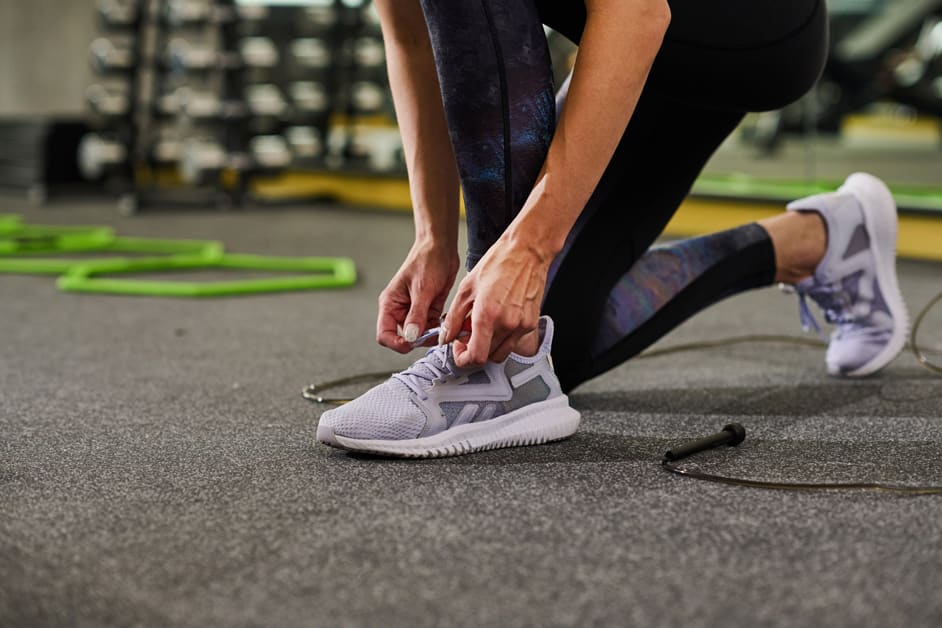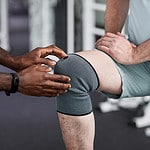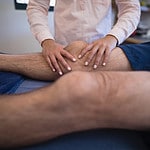Introduction
Living with chronic knee pain can be a challenge. Shoes can make it worse if they lack support. To combat this, it’s important to choose shoes with appropriate support.
Here are some tips for selecting the best pair of shoes if you suffer from knee pain:
- Ensure your shoe fits well in length and width – this ensures comfort and keeps your feet stable and in alignment.
- Look for cushioning, flexibility, and shock absorption in the sole.
- Choose materials like leather, canvas, or mesh that are breathable. This prevents sweat build-up and further discomfort.
- Look for features such as heel cups, ankle straps, and arch support. These help provide support for feet and reduce stress on the knees.
Causes of Knee Pain
Knee pain is an issue faced by many. Poor footwear can be an influencing factor, as they lack support for feet and increase strain. Other causes might include inflexible muscles, incorrect posture and even a traumatic injury or misalignment in the knee joint.
Let’s explore the causes of knee pain to help us take preventive measures:
Poorly fitted shoes
Ill-fitting shoes can be a major cause of knee pain. Especially when worn all day, shoes that are too small or too big can make walking off-balance, and create extra stress on the knees. Moving around in the shoe can also cause extra pressure on the kneecap, leading to aches and stiffness.
Flat or plastic-like shoes can add to the knee pain, too. Supportive shoes are key – they should have traction, shock absorption, and flexibility. An orthopedic insert or custom orthotic may give extra relief, helping to absorb the impact of walking or running on hard surfaces.
Overpronation
Do you overpronate? That’s when your foot rolls too far inwards when you walk or run. In the long run, this can lead to weak and unstable ankles and knees, and even pain.
It’s important for those with flat or high-arched feet to select shoes that offer maximum support. So, if you have pronation issues, opt for shoes labeled “stability” or “motion control”.
Dual-density foam midsoles are a great choice. They restrict rolling whilst providing great cushioning. Don’t forget to get shoes that fit properly, too. Ill-fitted shoes cause strain on the feet and lower limbs and can be very uncomfortable.
High-impact activities
Engaging in activities like running, tennis, basketball or soccer can be great for getting fit, but they put a strain on your feet and legs. This can result in pain, especially in the knees. To reduce this, wear shoes with good cushioning and softer soles. This helps absorb shock from running or jumping. If you do high-impact activities a lot, it’s wise to buy special shoes for extra protection.
Always wear the right footwear when doing physical activity, and take regular breaks. This gives your joints time to rest from the stress of activity. By following these guidelines, you can stay happy, healthy and injury-free.
Types of Shoes for Knee Pain
Feeling knee pain? Shoes can help! The right type of shoe is key. They give cushioning and support. This decreases pain, and stops extra irritation. What types of shoes help? Let’s check it out!
- The right type of shoe is key. They give cushioning and support.
- This decreases pain, and stops extra irritation.
Motion control shoes
When dealing with knee pain, the right shoes are a must. Motion control shoes are perfect for those with knee osteoarthritis. They give extra support and stability to feet and ankles. Their rigid sole limits rolling or pronation of the foot, reducing pain.
Motion control shoes also help counter excessive motion when walking or running. This makes them great at relieving knee pain caused by conditions like arthritis. They have more medial arch support than other running shoes. This gives you better balance and helps avoid damage to joint tissue from over pronation.
These shoes have a firmer heel counter, full length cushioning, and thick cushioning on the inside midsole. The heel height should be even. Durable outsoles provide increased traction.
When buying motion control shoes, look for stability and comfort. Your feet should breathe and have enough room for your toes to move. Talk to a salesperson to find the right pair for you. This will help you manage knee pain in the long run!
Cushioned shoes
Cushioned shoes are vital for feet free of knee pain. They offer support and shock absorption, which decreases the impact on your feet and joints. Folks with knee pain can gain relief and aid in recovery with cushioning and arch support.
When shopping for cushioned shoes, search for materials such as leather, suede, or canvas. Also, look for cushioning and a stable sole. Brands make special insoles or footbeds with padding or orthotics. Make sure the shoe fits properly to provide support without feeling too tight.
For heels, select styles with cushioning, arch support and a wedge or chunky heel for stability. Kneesocks under flats or sneakers add cushioning around the calf. Look for wide toe boxes so toes don’t feel cramped.
Stability shoes
Chronic knee pain can be caused by inadequate support from footwear. Stability shoes are the answer! They are designed with stability-enhancing technology to reduce over-pronation. This helps align the feet and body, reducing strain on the knee joints and improving comfort.
These shoes usually have a dual-density midsole and a supportive platform that follows the anatomy of your foot. It provides motion control. Plus, they usually have:
- Roomy toe boxes to reduce pressure points
- Cushioned heel counters to absorb shock
- Robust arch support to guide your foot
- Low heel drop to keep feet aligned
- Dynamic outsoles for cushioning, flexibility and grip.
When selecting stability shoes, consider the activity level, weight and pre-existing conditions. This will ensure enough cushioning and motion control for desired comfort. With the right pair, you can take steps towards being pain free!
Tips for Choosing the Right Shoes
Searching for the perfect shoes for your feet can be a game-changer. It can make the difference between living with knee pain or being free from it! But, it’s not always simple to determine what makes a pair of shoes the best fit.
Here are some tips to help you pick the shoes that can help ease your knee pain:
Measure your feet
Finding the right shoes starts with the perfect fit! Feet can change size and shape over time, so it’s important to know your current measurements. Use a brannock device, which is a tool used by shoe professionals to measure both the length and width of your feet.
When measuring, use a sock you would normally wear with the shoe. Measure both feet on a flat surface. One foot may be larger than the other. Don’t press down on the ruler when measuring. Use your measurements to find the right shoe size for each foot. If your feet are different sizes, look for websites which allow shoppers to order different sized shoes.
- Also, consider whether you want a snugger or looser fit. If your toe touches the inside edge, they may be too small. If there is an inch between your longest toe and end of shoe, they may not fit snugly. Comfort varies between brands and models. Always try them out before buying.
- Factor in any medical conditions too. These require softer leather materials and rounder toe caps that provide more room around these areas.
Choose shoes with good arch support
Arch support is essential when picking shoes. Shoes without enough arch support can cause strain on feet and knee pain. Look for supportive and cushioned shoes that have a good arch. Many sports and running stores provide a measure to assess arch support. This involves weighing down a wet paper insole. Observe the print left by your foot to see how well it fits the support system.
Shoes with good arch support should have a V-shape on the inner sole. Look for shoes that fit snugly around your heel, balancing the weight evenly. Wider or multi-position toe boxes can help increase stability and comfort when walking or running.
Look for shoes with a wide toe box
When shopping for shoes, it’s important to look for a wide toe box. This will give your toes room to move, so they won’t rub or bunch up and cause blisters. It can also help stop hammer toes, bunions, and neuromas forming.
When trying on shoes, check that your toes can wiggle around. If they feel too narrow or restrictive, they might not be the right fit.
Conclusion
Shoes have various features which can help reduce knee pain and provide comfort. Think arch support, cushioning, and design. It’s essential to select the right size and shape of shoes, to ensure the best comfort when doing activities like walking and running.
For further knee-protection, get a good quality pair of shoes with shock-absorbing capabilities! But don’t overdo it – wear them in first with shorter durations. This will prevent any unnecessary strain on your knees. With the proper shoes, you can remain active and free from knee pain!
Frequently Asked Questions
Q: What types of shoes should I wear to prevent knee pain?
A: Shoes that provide shock absorption and good arch support are best for preventing knee pain. Look for shoes with thick cushioning in the heels, flexible midsoles, and rigid toe boxes.
Q: Is there a certain type of sole that is best for alleviating knee pain?
A: A sole with good shock absorption is best for alleviating knee pain. Look for shoes with thick cushioning in the heels, flexible midsoles, and rigid toe boxes.
Q: Are certain materials better for preventing knee pain?
A: Yes. Look for shoes made with breathable fabrics, such as mesh or leather, as this will help keep your feet cool and dry. Also, look for materials that provide good arch support, such as EVA foam or cork insoles.





